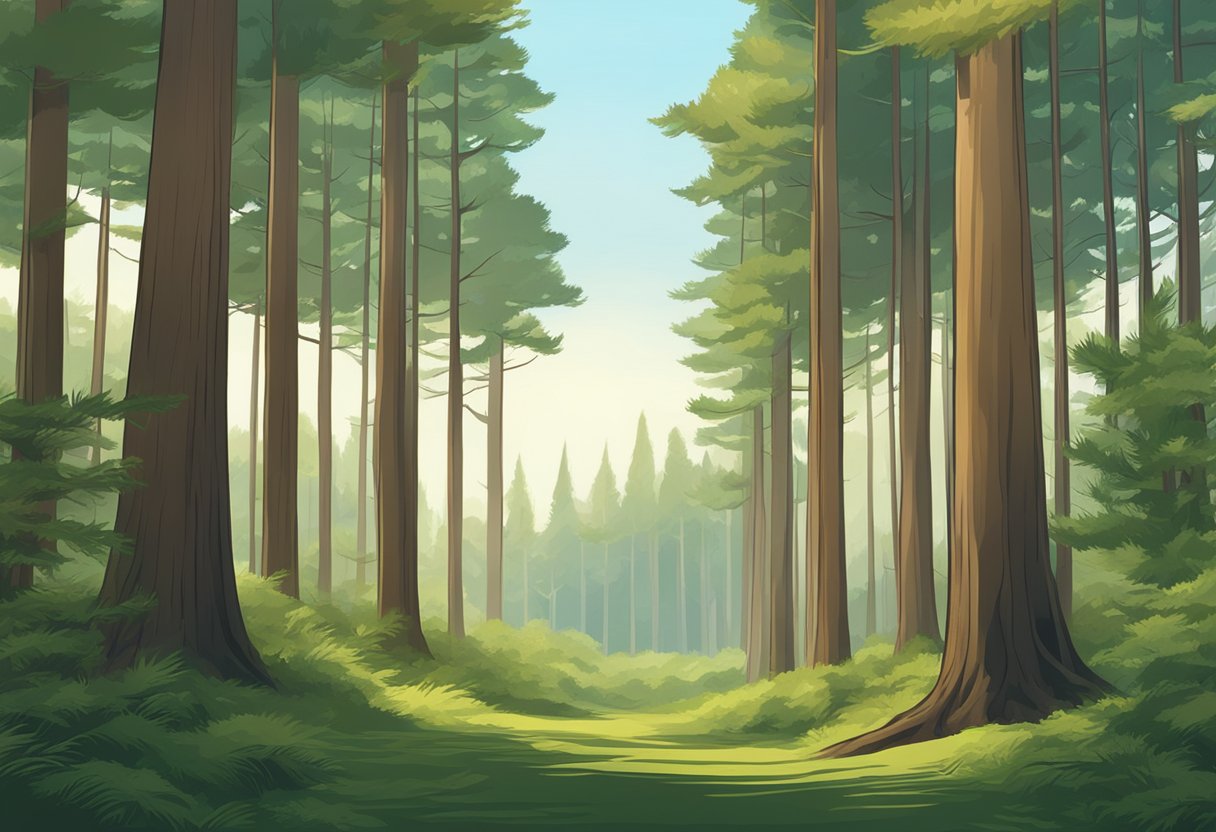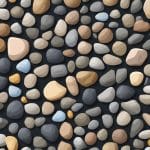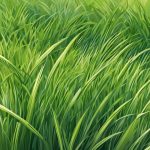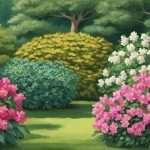Types Of Cedar Trees
Cedar trees are a popular choice for landscaping due to their beautiful appearance and versatility. However, with so many different types of cedar trees, it can be difficult to know which one is right for your needs. In this article, we will explore the different types of cedar trees, their physical characteristics, and preferred growing conditions.
Classification and Types:
There are four types of true cedars: Atlas, Deodar, Cyprian, and Lebanon. Each of these species has its own unique physical characteristics and preferred growing conditions. Additionally, there are several false cedars, including cypress trees, which are often confused with true cedars due to their similar appearance. Understanding the differences between these types of cedar trees is essential for selecting the right tree for your landscaping needs.
Physical Characteristics:
Cedar trees are known for their distinctive needles and cones, as well as their beautiful wood grain. Each type of cedar tree has its own unique physical characteristics, such as needle length, cone shape, and bark texture. Understanding these differences can help you identify each species and determine which one is right for your landscaping needs.
Key Takeaways:
- There are four types of true cedars and several false cedars, which can be confusing to identify.
- Physical characteristics such as needle length, cone shape, and bark texture can help distinguish between different types of cedar trees.
- Understanding the preferred growing conditions for each species is important for selecting the right cedar tree for your landscaping needs.
Classification and Types

Cedar trees belong to the Pinaceae family, which also includes pine, fir, and spruce trees. Within the Pinaceae family, the genus Cedrus is home to four true cedar species: Cedrus deodara, Cedrus libani, Cedrus atlantica, and Cedrus brevifolia. These species are all native to mountainous regions of the Mediterranean and Asia.
True Cedar Species
Cedrus deodara, also known as the Himalayan cedar, is a large evergreen tree with bright green needles and moderately large cones. Cedrus libani, or the cedar of Lebanon, has glaucous, bluish-green foliage. Cedrus atlantica, also called the Atlas cedar, has dark green foliage, while Cedrus brevifolia, or the Cyprian cedar, has bluish-green needle-leaves.
False Cedar Varieties
Several other types of trees are commonly referred to as “cedars,” but they do not belong to the Cedrus genus. These false cedar varieties include Juniperus virginiana, Calocedrus decurrens, Chamaecyparis lawsoniana, Thuja plicata, and Thuja occidentalis. These trees are part of the Cupressaceae family and are often used for ornamental purposes due to their attractive foliage and unique shapes.
Overall, cedar trees are a diverse group of conifers with a variety of characteristics and uses. Whether you are looking for a true cedar species or a false cedar variety, there is sure to be a tree that fits your needs.
Physical Characteristics
Cedar trees are known for their unique physical characteristics, which make them stand out from other types of trees. In this section, we will explore the bark and foliage, cones and seeds of cedar trees.
Bark and Foliage
Cedar trees have a reddish-brown bark with long scales that are easily peeled. The bark of cedar trees is rough and has a fibrous texture. The foliage of cedar trees varies according to the species, but it is generally a dark green color. The foliage can be needle-like or scale-like, depending on the species.
Cones and Seeds
Cedar trees produce cones that are generally small and woody. The cones are often shaped like a barrel, and they can range in color from green to brown. The cones of cedar trees are an important food source for many animals, including birds and squirrels. Cedar trees also produce seeds that are triangular and winged.
In summary, cedar trees have unique physical characteristics that make them easily identifiable. Their reddish-brown bark, needle-like or scale-like leaves, and small woody cones are just a few of the features that make cedar trees stand out.
Preferred Growing Conditions
Cedar trees are hardy and can grow in a wide range of conditions, but some species have specific preferences when it comes to soil, water, sunlight, and climate. Here are some tips on how to create the ideal growing conditions for your cedar trees.
Soil and Water Needs
Cedar trees prefer well-drained soil that is moist but not waterlogged. They can tolerate a wide range of soil types, including sandy, loamy, and clay soils, as long as they are well-draining. Cedar trees do not like wet feet, so make sure the soil is not waterlogged or prone to flooding.
To ensure your cedar trees get enough water, it is important to water them regularly, especially during dry spells. However, be careful not to overwater them, as this can lead to root rot and other problems. A good rule of thumb is to water deeply once a week, rather than shallowly every day.
Sunlight and Climate Preferences
Most cedar trees prefer full sun to partial shade, but some species can tolerate more shade than others. For example, the Atlantic white cedar (Chamaecyparis thyoides) can grow in full sun to partial shade, while the western red cedar (Thuja plicata) prefers full sun.
Cedar trees can grow in a wide range of climates, from cool and moist to hot and dry. However, some species have specific preferences. For example, the eastern red cedar (Juniperus virginiana) is native to eastern North America and prefers a cool, moist climate, while the Arizona cypress (Cupressus arizonica) is native to the southwestern United States and prefers a hot, dry climate.
In summary, cedar trees are hardy and can grow in a wide range of conditions, but they have specific preferences when it comes to soil, water, sunlight, and climate. By providing the right growing conditions, you can help your cedar trees thrive and reach their full potential.
Cedar Trees in Landscaping
Cedar trees are popular choices in landscaping due to their ornamental value and environmental benefits. They are evergreen conifers with a moderate to fast growth rate, making them a great addition to gardens and landscapes.
Ornamental Uses
Cedar trees are often used in landscaping for their ornamental value. They have a unique and attractive appearance, with their needle-like leaves and conical shape. Cedar trees can be used as specimen trees, hedges, or as a backdrop for other plants. They are also great for providing privacy and shade.
Environmental Benefits
Cedar trees also provide many environmental benefits. They are great for improving air quality, as they absorb pollutants and release oxygen. They also help to prevent soil erosion and provide habitat for wildlife.
When it comes to landscaping, there are many different types of cedar trees to choose from. Some of the most popular species include the Atlas cedar, Cyprian cedar, Himalayan cedar, and Lebanon cedar. Each species has its own unique characteristics and growth habits, so it is important to choose the right one for your specific landscaping needs.
Overall, cedar trees are a great choice for anyone looking to add some ornamental value and environmental benefits to their garden or landscape. With their unique appearance and many benefits, they are sure to be a great addition to any outdoor space.
Cultural and Commercial Significance
Cedar trees have been an integral part of various cultures and civilizations for centuries. They have been revered for their strength, resilience, and timelessness, making them symbols of prosperity and abundance. Cedar trees have historical and cultural significance worldwide, and their wood and resin have been used for various purposes.
Historical Importance
Cedar trees have been considered sacred in many cultures. They were used in traditional ceremonies and rituals, and their wood and resin were believed to have healing properties. Cedar trees were also used to build temples, shrines, and other important structures.
In North America, the indigenous people used cedar trees for various purposes. They used the wood to build canoes, totem poles, and other structures. The bark was used to make clothing, baskets, and other items. The resin was used for medicinal purposes.
Wood and Resin Uses
Cedar wood is rot-resistant, making it ideal for outdoor use. It is commonly used for fence posts, decking, and siding. The wood is also used for furniture, flooring, and other indoor applications.
Cedar resin, also known as cedar oil, has a pleasant aroma and is used in perfumes, soaps, and other cosmetic products. It is also used as an insect repellent and as a natural remedy for various ailments.
There are several cultivars of cedar trees, each with its own unique characteristics. Some of the most popular species include Western Red Cedar, Eastern Red Cedar, and White Cedar. Each species has its own distinct properties and uses.
In conclusion, cedar trees have played a significant role in various cultures and civilizations throughout history. Their wood and resin have been used for commercial and medicinal purposes, and their cultural significance continues to be recognized today.






